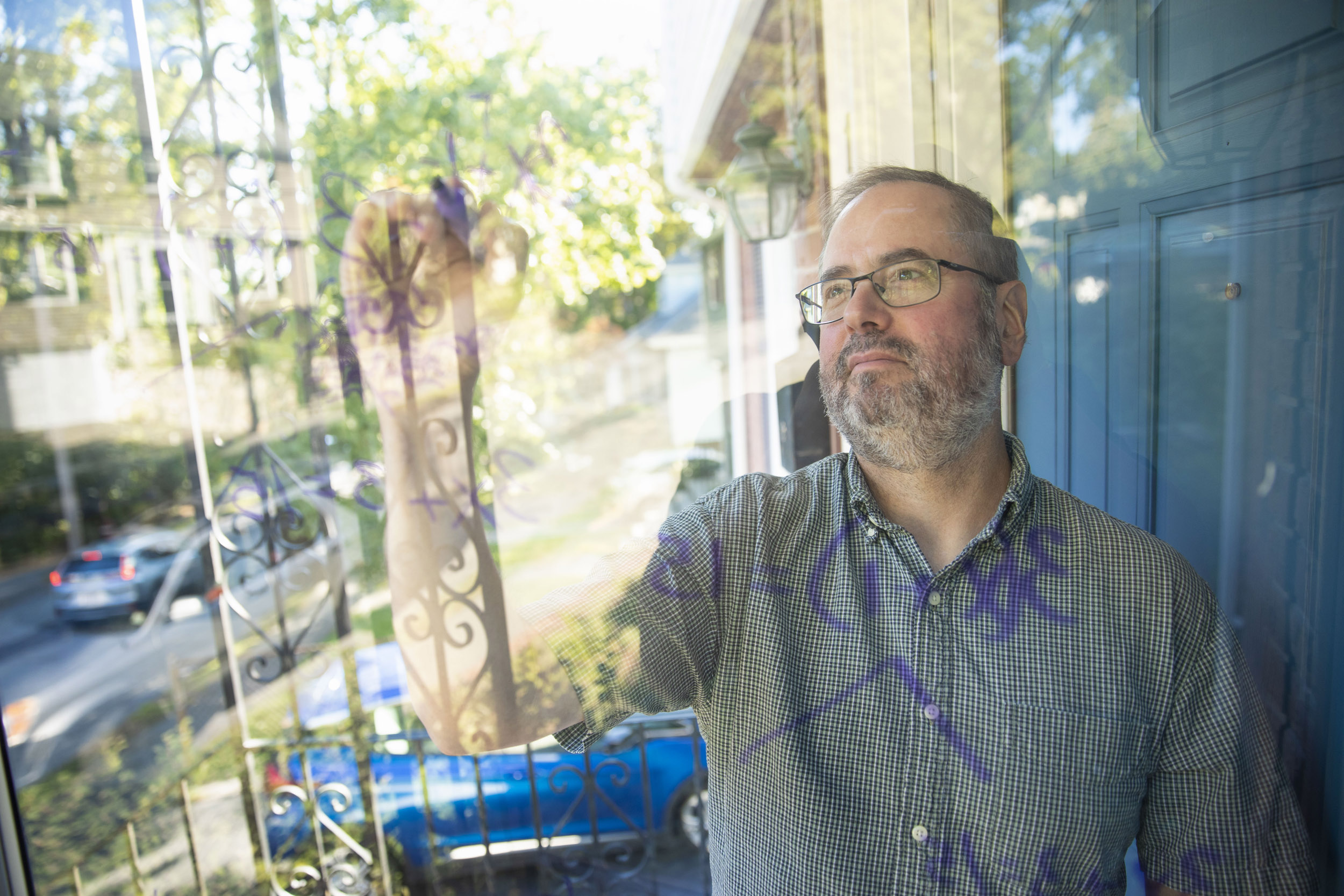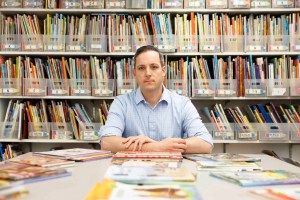
“Teachers should teach math in a way that encourages students to engage in sense-making and not merely to memorize or internalize exactly what the teacher says or does,” says Jon R. Star.
Kris Snibbe/Harvard Staff Photographer
One way is the wrong way to do math. Here’s the right way.
Research by Ed School psychologist reinforces case for stressing multiple problem-solving paths over memorization
There’s never just one way to solve a math problem, says Jon R. Star, a psychologist and professor of education at the Harvard Graduate School of Education. With researchers from Vanderbilt University, Star found that teaching students multiple ways to solve math problems instead of using a single method improves teaching and learning. In an interview with the Gazette, Star, a former math teacher, outlined the research and explained how anyone, with the right instruction, can develop a knack for numbers.
Q&A
Jon R. Star
GAZETTE: What is the most common misconception about math learning?
STAR: That you’re either a math person or you’re not a math person — that some people are just born with math smarts, and they can do math, and other people are just not, and there’s not much you can do about it.
GAZETTE: What does science say about the process of learning math?
STAR: One thing we know from psychology about the learning process is that the act of reaching into your brain, grabbing some knowledge, pulling it out, chewing on it, talking about it, and putting it back helps you learn. Psychologists call this elaborative encoding. The more times you can do that process — putting knowledge in, getting it out, elaborating on it, putting it back in — the more you will have learned, remembered, and understood the material. We’re trying to get math teachers to help students engage in that process of elaborative encoding.
GAZETTE: How did you learn math yourself?
STAR: Learning math should involve some sense-making. It’s necessary that we listen to what our teacher tells us about the math and try to make sense of it in our minds. Math learning is not about pouring the words directly from the teacher’s mouth into the students’ ears and brains. That’s not the way it works. I think that’s how I learned math. But that’s not how I hope students learn math and that’s not how I hope teachers think about the teaching of math. Teachers should teach math in a way that encourages students to engage in sense-making and not merely to memorize or internalize exactly what the teacher says or does.
GAZETTE: Tell us about the teaching method described in the research.
STAR: One of the strategies that some teachers may use when teaching math is to show students how to solve problems and expect that the student is going to end up using the same method that the teacher showed. But there are many ways to solve math problems; there’s never just one way.
The strategy we developed asks that teachers compare two ways for solving a problem, side by side, and that they follow an instructional routine to lead a discussion to help students understand the difference between the two methods. That discussion is really the heart of this routine because it is fundamentally about sharing reasoning: Teachers ask students to explain why a strategy works, and students must dig into their heads and try to say what they understand. And listening to other people’s reasoning reinforces the process of learning.
GAZETTE: Why is this strategy an improvement over just learning a single method?
STAR: We think that learning multiple strategies for solving problems deepens students’ understanding of the content. There is a direct benefit to learning through comparing multiple methods, but there are also other types of benefits to students’ motivation. In this process, students come to see math a little differently — not just as a set of problems, each of which has exactly one way to solve it that you must memorize, but rather, as a terrain where there are always decisions to be made and multiple strategies that one might need to justify or debate. Because that is what math is.
For teachers, this can also be empowering because they are interested in increasing their students’ understanding, and we’ve given them a set of tools that can help them do that and potentially make the class more interesting as well. It’s important to note, too, that this approach is not something that we invented. In this case, what we’re asking teachers to do is something that they do a little bit of already. Every high school math teacher, for certain topics, is teaching students multiple strategies. It’s built into the curriculum. All that we’re saying is, first, you should do it more because it’s a good thing, and second, when you do it, this is a certain way that we found to be especially effective, both in terms of the visual materials and the pedagogy. It’s not a big stretch for most teachers. Conversations around ways to teach math for the past 30 or 40 years, and perhaps longer, have been emphasizing the use of multiple strategies.
GAZETTE: What are the potential challenges for math teachers to put this in practice?
STAR: If we want teachers to introduce students to multiple ways to solve problems, we must recognize that that is a lot of information for students and teachers. There is a concern that there could be information overload, and that’s very legitimate. Also, a well-intentioned teacher might take our strategy too far. A teacher might say something like, “Well, if comparing two strategies is good, then why don’t I compare three or four or five?” Not that that’s impossible to do well. But the visual materials you would have to design to help students manage that information overload are quite challenging. We don’t recommend that.




